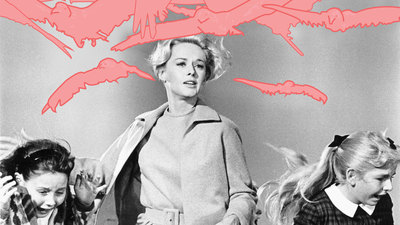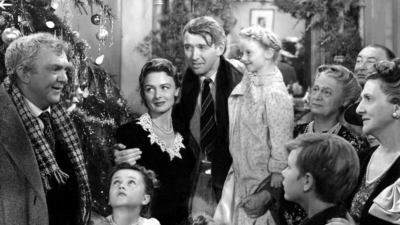
BY MATTHEW ENG |
SON OF SAUL's László Nemes and Géza Röhrig on Depicting History from the Inside
Writer-director László Nemes and actor Géza Röhrig discuss their acclaimed new film, a harrowing Holocaust drama free of forced drama and false uplift.
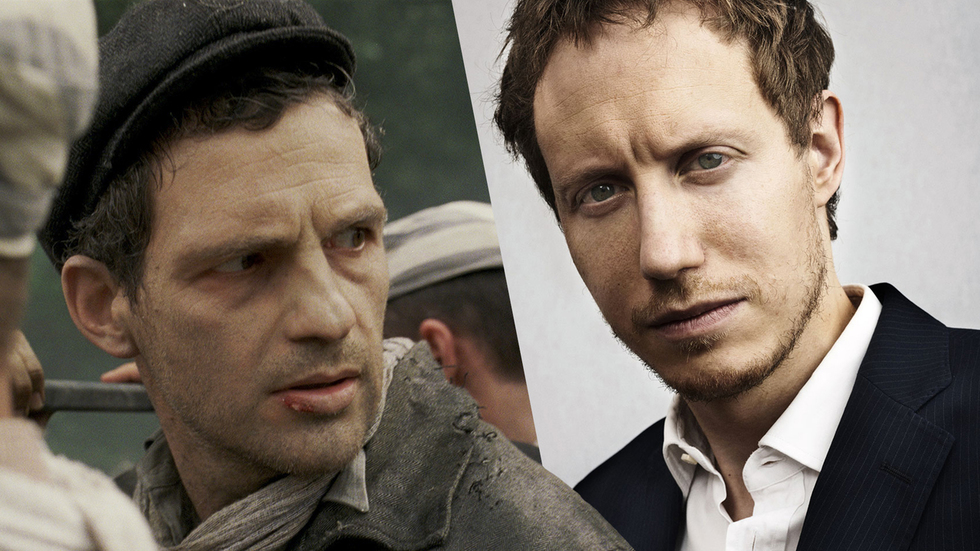
Every few years, you see a film that you just know, from its very first shots, will become an enduring staple of cinephiliac and ideological debate, film school and social studies syllabi, and cinematic and even national history.
László Nemes' debut (!) feature Son of Saul (a.k.a. Saul fia) is an artistically astonishing and narratively unique dramatization of the Holocaust that has been making waves among filmgoers since May of this year, when it won the Grand Jury Prize at Cannes amidst an ardent but divided audience reception. The film quite literally follows its title character, Saul (first-time film actor Géza Röhrig, in one of the year's most unforgettable performances), an Auschwitz prisoner tasked with working in the Sonderkommando, i.e. work units made up of death camp detainees who were forced to dispose of gas chamber victims. When he notices a young man who has managed to survive the chambers for a few brief minutes, Saul becomes intent on providing a proper burial for the boy, whom he hauntingly begins to refer to as his "son."
We spoke to Nemes and Röhrig about their respective debuts, Saul's radical shooting style, and the pressures of depicting the Holocaust in a genre littered with several masterworks—and many well-intentioned misfires.
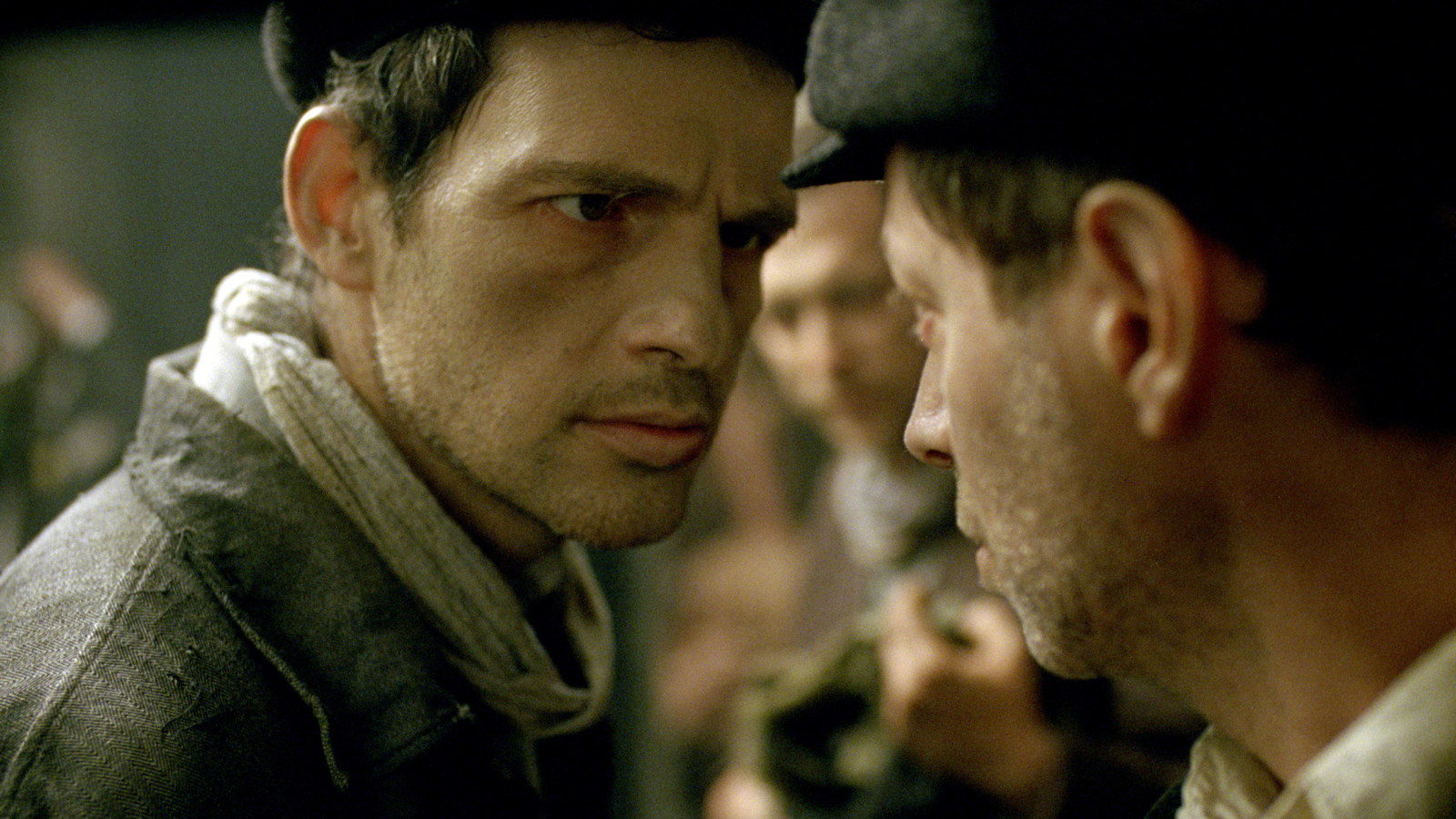
Tribeca: László, what are the roots of Son of Saul? When did it first become clear to you that this story was one you needed to tell?
Nemes: The roots originated from the text of the Sonderkommando members of Auschwitz, the text that had been written by the prisoners of the Sonderkommando within the extermination process. And these texts were found after the war, sometimes decades after. And [they] gave me, as a reader, the possibility to be there with the Sonderkommando, in the middle of the extermination process and not experiencing the Holocaust from the outside, but really from the inside. That gave me the willingness to talk about the extermination through the experience of the Sonderkommando. The question was, How to approach it? I had a feeling cinema was able to communicate [that] through its language, to communicate directly with the viewer in a visceral way.
Tribeca: László and Géza, how did this creative partnership come about?
Nemes: We met 10 years ago in New York. I spent a year in New York and I met [Géza] through friends. I had a feeling that he was very interesting… I didn’t have the plan to have him in a movie, but we had a good personal relationship. When I started casting for Saul, I submitted this idea to the casting director—not for Saul, but in general, let’s take a look at this guy because he's interesting, and he lives in New York. This is the kind of person we're looking for for this film. We didn't want any kind of traditional acting in this film. We wanted something that would be more unconventional. That's how the adventure began.
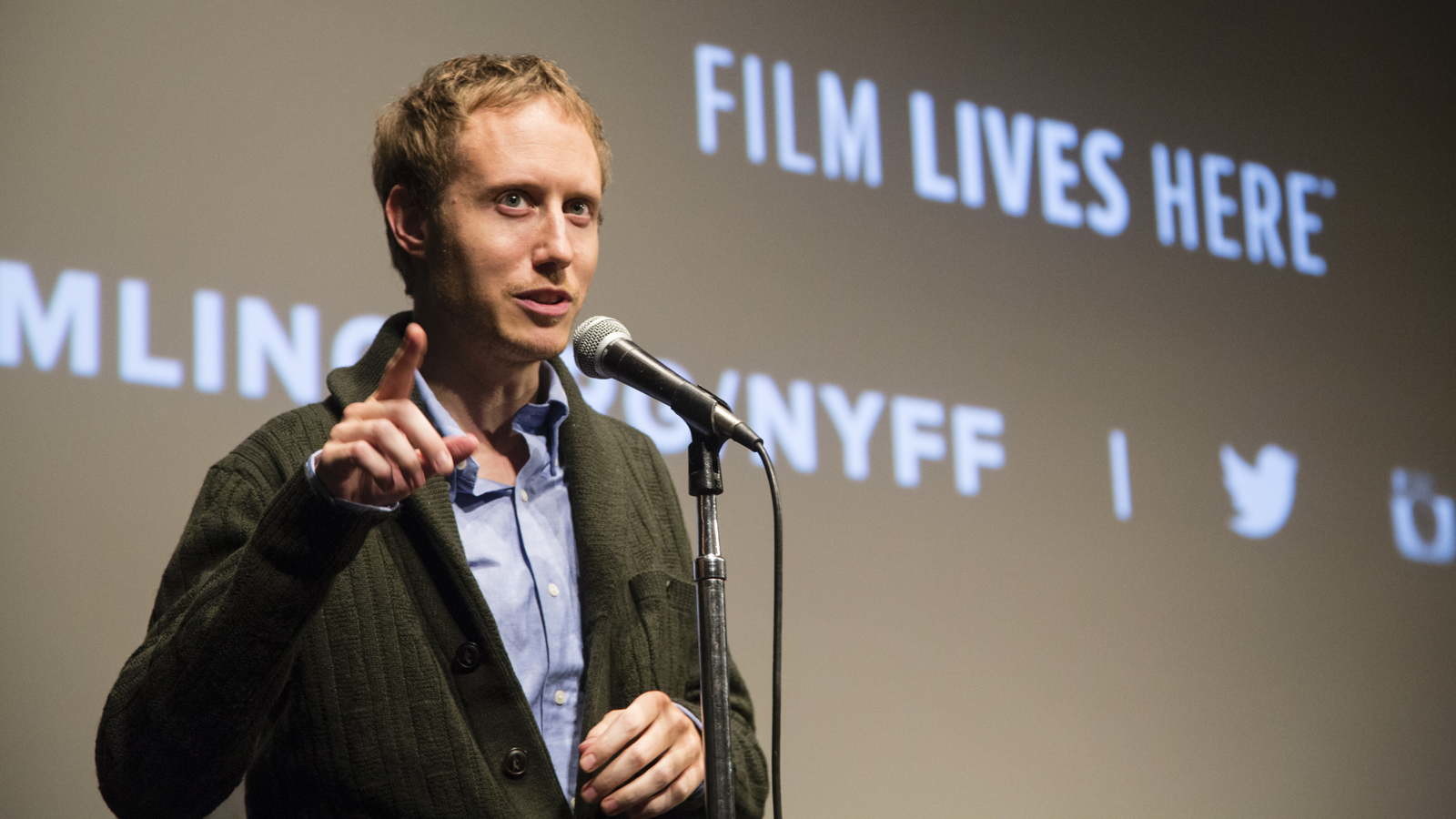
Röhrig: László sent me the script on email. I printed it out, read it in an hour, and I was onboard. It was really speaking for itself. It was a very well-written script, and it really grabbed and approached the subject matter in a different way than any other so-called "Holocaust movie" did. There were plenty of those, more than even I see and I see a lot. And I was excited. I did not know in what capacity or how he'd like me involved, but I expressed my full support and then the rest is history.
Tribeca: Saul's goals are so crystal-clear and yet his emotions are totally elusive and his deeper motivations remain very nearly secretive to the viewer. In a way, he's the type of character who could seemingly only exist in cinema. Géza, as a first-time film actor, what were some of the challenges you encountered in embodying a character as cryptic as Saul?
Röhrig: I think it's purposefully sort of an enigmatic character. In such a time and place as this, Saul had to, was forced to, exist and carry out his duties in what was basically a past-less and futureless existence. His past, his family, his memories… They gradually disappeared. His being became biological. The will to live becomes independent of the person and, after a while, it’s just uncontrollable. All the Sonderkommando members who were able to make it through and to carry their tasks—the only way to do this was to shut down emotionally and live in an extremely narrow way.
But his quest and his mania, so to speak, to get this boy buried was the only thing he knew certainly for sure. In other words, he was holding on to that obligation as the only solid point of the universe. This is the right thing. He owes this to this boy. Something happened that he encountered when he met and saw the agony of this boy who survived the gas chamber for a couple of minutes. And he just felt gratitude almost. He owed this boy for his regained normalcy, so to speak. He was able to be in touch with his inner core and, before that, he felt that it was gone. He was, again, getting the relighted flame of a person. And what else can you do good for a dead person besides bury him?
Nemes: [Holds up his iPhone] I just found the email I wrote to [Géza].
Röhrig: Back then?
Nemes: Yeah.
Röhrig: That's funny.
Tribeca: What does it say?
Nemes: I wasn't even sure [he'd] remember me. Because we didn't talk for six years, or something like that. It was just funny to find [that].
Tribeca: The film's first-person, over-the-shoulder cinematography is so specific but also so formally ambitious that I honestly don't think I've ever seen anything quite as daring. Laszlo, how did you devise this immersive shooting style?
Nemes: It's something that I really came to design over the course of a few years while working with my cinematographer on my short films and through conversations that I had with him. It took me years to design it, even though the core idea was there with my first short film [2007's With a Little Patience]. But we were ready to make [a] portrait of very important times through this portrait of one individual. When [you have] to go into details, an overall strategy has to be adapted to every situation in a given film. So it was a long process and I needed time. But the main idea behind it all was that the only thing we can represent with honesty in a concentration camp is the human face. And this human face would give the measure to everything that’s going on. And following one individual through hell is, I think, the only possibility of going through hell. Because we didn't want to do a horror film. We had to rely on the viewer to hint at the enormity of the conduct.
Tribeca: Géza, how did this shooting style affect and even shape your performance?
Röhrig: I fully understood why it was this way and I embraced the idea. I thought it's how it should be, and it didn’t take me more than a day or two to get used to this huge camera right in front of my face.
Nemes: I don't think you needed time. From the first scene, he had the same understanding and approach as [on] the last day. Even from a technical point of view, it was probably easier for him to learn how to be on a set, really to be in the middle of the attention. But what he delivered was there from the beginning. There's no learning curve.
Röhrig: And I think the personal chemistry or sympathy was also important in the cinematography. [Lászó and I] literally spoke the same language.
Nemes: And he understood that the spectrum of emotions had to be very minimal, not only because of the subject matter, but because of our premise. There had to be no filmic drama in this film because we wanted to have something more real and raw. But also, we were so close to [Géza] that the [minutest] shadow of something that's going on on his face would be registered by the camera.

Tribeca: Film has certainly been no stranger to stories about the Shoah, both good and bad. But Son of Saul feels like a landmark moment for both this particular historical crisis and for historical cinema itself. Laszlo, why do you feel that Saul’s story needs to be told and seen now?
Röhrig: I have a feeling that if Son of Saul had been done in the '60s, I don't think the world would have been ready for it. I think that a certain time and distance had to happen to address the sensitive part of the story. From a particular Jewish point-of-view, the survivors are dying and we are losing the living link to history, so to speak. In the growing absence of the witnesses, I think this movie also comes kind of in a sensitive time because there is this anxiety in the Jewish community [that] somehow the memory is going to fade once there are no living survivors of the Holocaust. There's never any sort of definitive account of the Holocaust; there can be no movie made and there should be no movie made that is the [definitive account]. But we really felt that what is kind of missing from the landscape of Holocaust cinema is a movie like ours. There were a lot of attempts, honest and good-willing attempts of talking about this subject matter, but lots of them, for whatever reason, I think they were missing the point. We felt that as much as it's kind of known and even boring to some degree, because there are so many movies around the Second World War, the daring was missing, some way to get into the very heart of the matter.
Nemes: In a way, the people tend to approach history in a very frozen manner and I wanted to offer an internal point of view to something that seems to be so well-known. History experienced from the inside doesn't look like a postcard. It looks like reality. The nature of this reality has to be and can be interrogated through cinematic means. That can lead to interesting results. It also can stay with the audience and the audience can think about these issues. I think the issue of evil within human civilizations is something that’s forgotten. Cinema should communicate with the audience by using the imagination of the viewer. That's more and more forgotten because of television-style aesthetics and television-style approaches to storytelling, which are more based on giving too much to the audience. I wanted to go back to what I consider the most interesting approach to filmmaking and cinema, which is involving the audience in a very personal and visceral way.
Tribeca: The film has received high praise from Claude Lanzmann, who has called Saul the "anti-Schindler’s List." What does his blessing mean to you? Have you developed a relationship with him?
Nemes: I did, and I think Géza did also.
Röhrig: I did, but László speaks more French so it was easier for him to develop [one]. I was 16 or so in the mid-eighties when I went and saw the full version of [Lanzmann's seminal Holocaust documentary] Shoah, the nine-and-a-half-hour version. I remember it was a Sunday morning and people were voting if we should have breaks or not. I voted not to have breaks, but I [was] voted down. In any case, this was definitely a turning point for me and films, watching Shoah back then. So, having his blessing obviously means a lot.
Nemes: And also, for me, it was important because I watched Shoah so much in pre-production with my cinematographer and co-writer. It was such an interesting inspiration. Shoah is about, in a way, a very important off-screen space of the destroyed European-Jewish world. And we had a very important rule for the off-screen of Saul. We're in the same tradition, I guess. You have to be responsible. You have to carry the responsibility when you talk about the Holocaust. You have to talk about it, but you cannot take the Holocaust in a fiction film for its dramatic value. If you talk about it, you have to interrogate the very essence of the Holocaust. I wanted to make this film so that filmmakers after me will not consider it a taboo, but also will not try to just use the Holocaust, but rather really interrogate its nature.
Tribeca: Laszlo, any film that attempts to reckon with the events of the Holocaust instantly opens itself up to deep critical scrutiny, whether it be over moral implications or factuality or artistic license. Although it's been widely-praised from the festival circuit to critics, Son of Saul has certainly been no exception to this rule. As a writer-director recreating these horrors, how did you balance the ethical weight of the subject matter while nonetheless forming it into a gripping film?
Nemes: It has to be embedded in the creative process, but we were very deeply conscious of the responsibility that we had in approaching the subject, so everybody on the team had a clear and profound understanding of it, a visceral understanding of it. The visual approach of presenting one individual is the answer to all ethical questions, because the human face will give the reference to everything that goes on. But the context is there, the main character is in the situation, and the situation goes through the filter of the main character. But the target becomes the viewer. It becomes very personal. It's something that had to be done in a film about the Holocaust. It had to be visceral because the viewer now, today, keeps that at bay.

Tribeca: Géza, your performance is so brilliantly internalized that it could almost exist in a silent film. Do you have any acting aspirations beyond Saul?
Röhrig: I'm open to it, if it's the right fit.
Tribeca: I saw a picture of you and Cate Blanchett at Cannes. I'd love to see that.
Nemes: It would be good!
Röhrig: She's lovely and super intelligent. She saw the movie. She loves the movie. But, yeah, I'm open to it.
Tribeca: There are so many supporting characters and fleeting faces in Saul and they all make indelible impressions. But I'm curious about how you coached the extras who played the prisoners and even, in some instances, actual corpses. It’s such a dangerous and vulnerable situation to put yourself in emotionally and psychologically.
Nemes: For the actors, we had to achieve a state that was not a sort of post-war perception of the role. But these people had to behave in a way that was 1944 and not 2014. So, just try to eradicate the sort of emotional projection of pity and self-pity and overly-emotional states. These people, the Sonderkommando, are traumatized and we had to find ways to get there. And I wanted to know as much as possible about the Sonderkommando and then try to forget it in a way. So, we had to make the acting as simple and raw as possible. In a way, it's more like a [Robert] Bresson approach, to be and exist. Also, I had a director-friend who was hired to direct the extras, so everybody was instructed by a director, even if I didn't have the opportunity on 28-day shoot to direct everybody. But it was very much immersed in this reality. And I think we had to use this energy of the [actors] feeling that they were in a real place and a real time and not on a movie set. We had to make it real.
Son of Saul opens in select theaters on December 18th. Find theater listings here.
